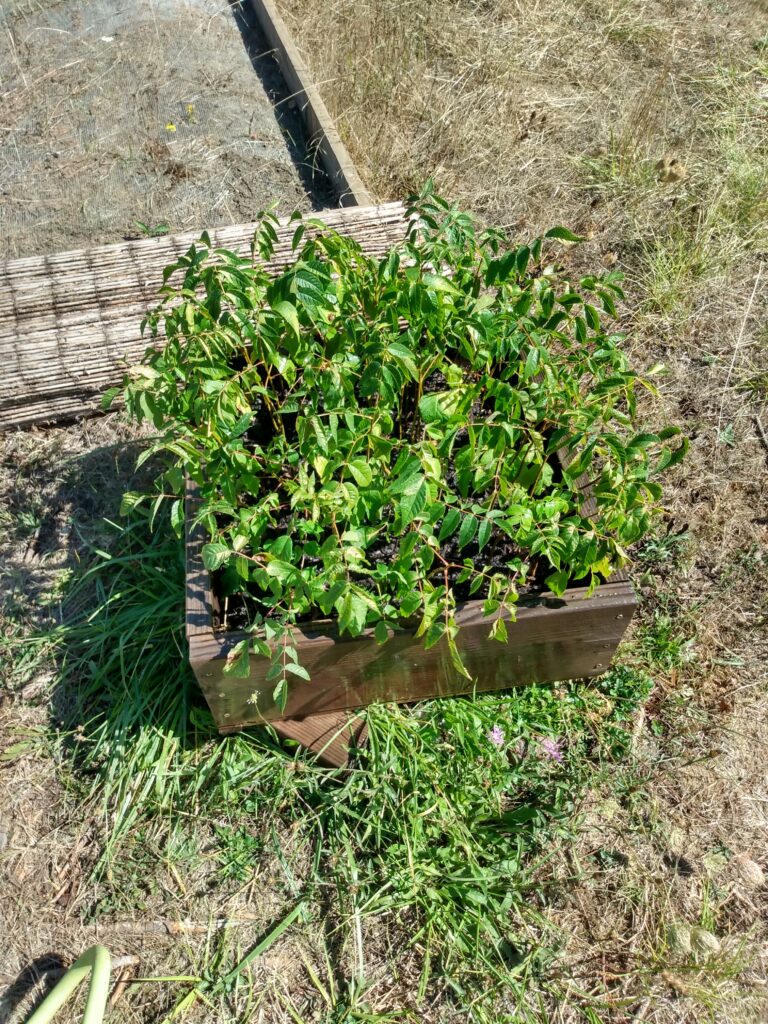
Sam here. I recently found out that walnuts are considered an invasive species. We had a member of the local watershed council out to walk the section of Price Creek that runs through our piece of land. He points to a beautiful tree in the riparian understory and recommends we cut it down. There was only one walnut tree, competing for light with mature Oregon white oaks and big leaf maples. I had not yet known this tree was there (yet to identify it as a walnut anyways) and was ecstatic at the thought of collecting buckets of rich buttery nuts and bringing them home for my family. Needless to say, I told the watershed council member that we were keeping the tree – and had to break it to him that we were propagating walnuts to plant throughout our land and sell.
Back downstream at the nursery, it has been a long hot summer for our young nut trees. The walnuts have fared as well as any of the nut trees (shoutout to the northern pecans for also beating the heat). We lost some chestnut seedlings due to the lack of water and too much sun. Some hazelnuts shed their leaves in the heat only to recently send out a new round of young buds. We’ve learned some important lessons this year.

Through drought and heat, however, the walnut family is going strong. Our hinds black walnut trees (pictures above) have all survived with no shade all season. They are also in our smallest air prune bed (dries out faster than any other). I’ve heard black walnut trees can thrive in wet areas, and it seems they can tolerate drought too. Our beds with English walnuts are somewhat sparse (due to less than ideal germination), but the trees have all survived (picture below). The butternut, or white walnut, trees have also all survived.

The walnut is a hardy tree that grows one of the healthiest plant-based foods we know of. Walnuts are extremely high in omega-3’s and the tree has even been called “the butter tree.” The nuts can also be stored for the entire winter. Imagine a world where ample walnuts are available to feed the masses. I know I’ll keep planting walnut trees, and ask you all to join me. All trees I mentioned ( the hinds black walnut, English walnut, and butternut) will be available bareroot this winter; on our site or at the Corvallis indoor winter market.
Sam here once again. Just a tip for making walnuts even better:
Once shelled, soak walnuts in saltwater (I use ~1 teaspoon of salt per quart of water) for about 24 hours, changing the water once about halfway through. The water will take most of the tannins out of the nuts, making them way tastier and without the dry-mouth you get from eating walnuts. The tannins are dark brown and you can see how beneficial soaking the nuts is when you drain off the water. After draining, eat fresh or dry in a low-temp oven or dehydrator if planning to store them.